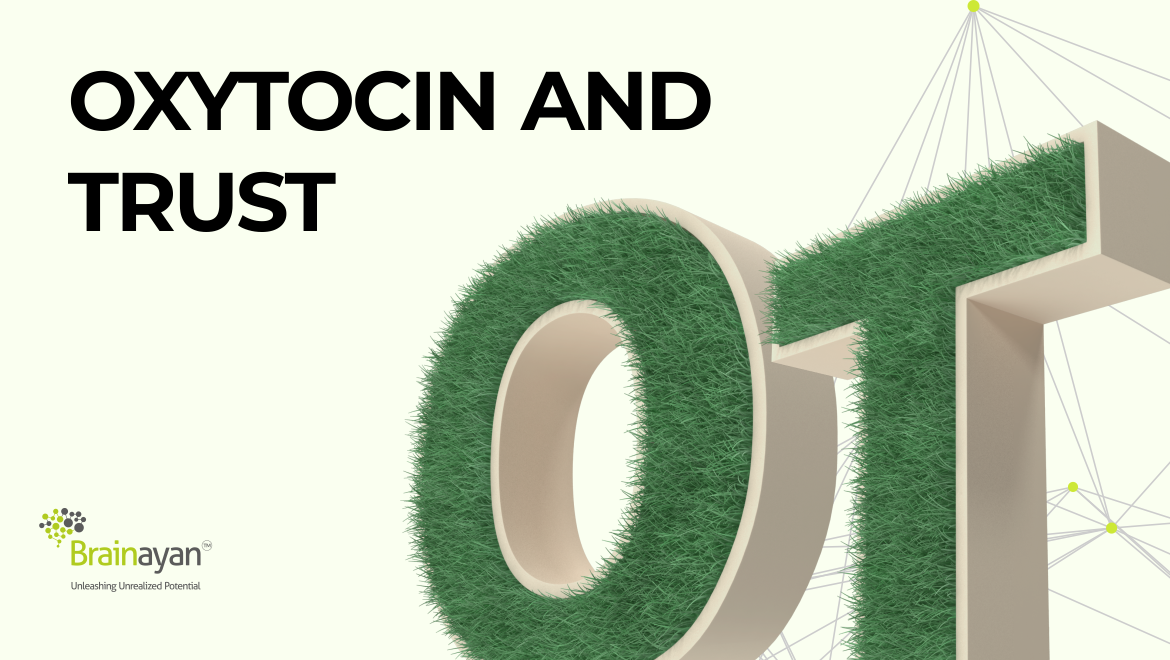Oxytocin and Trust

Hormones play a key role in how we behave. Oxytocin is one of those. It’s one of the eight hormones produced by the pituitary gland. Oxytocin is generally released by the stimulation of the sex and reproductive organs, during orgasm, in the final stages of childbirth and during suckling. How is this connected to leadership?
Oxytocin and it’s link to trust
There are some effects that are linked to oxytocin that are important from the perspective of leadership. We tend to trust people we are with a bit more when there’s oxytocin in the blood. That is why oxytocin makes us bond with our loved ones and we grow sad when we part ways. Some neuroscientists like Paul Zak have gone to the extent of calling oxytocin the trust molecule. It’s not entirely true that oxytocin makes us trust people we are with. However, oxytocin has a subdue effect on the amygdala activity, leading to reduced fear response. fMRI (functional magnetic resonance imaging) studies have shown that the fear response in the amygdala is considerably reduced after the administration of oxytocin. That means, oxytocin leads to lowered caution that translates into increased trust. Therefore, if we want to build trust with our people, we need to activate the release of oxytocin. How do you do that?
Just simple things that make people happy:
- A warm handshake or a hug or a culturally equivalent alternative
- Appreciating people
- Lowering the uncertainty people feel through clear goals, expectations and communication
- Being clear about what success looks like and how performance will be measured
- Listening deeply
- Feeding forward
Just simple day to day things we can do as people leaders that make people experience the release of oxytocin, which in turn leads to their trusting us more and forming a better bond with us.
How else can this be applied? Note that oxytocin subdues fear response. When do your people feel fear? Or even flight and freeze? During performance reviews maybe. During feedback conversations. During change. During layoffs. How can we calm their nerves. By taking action that releases oxytocin. What are some actions that can lead to releasing oxytocin in such situations?
- Articulating our intention
- Being respectful
- Communicating information frequently
- Making time to talk to people
- Being patient with people
- Verbalizing how we plan to support people, in good and bad outcomes
This is why oxytocin is called the trust molecule. It doesn’t directly make us trust others. But if we have a flush of oxytocin, we tend to fear less, which leads to our worrying less about betrayal and trusting people, sometimes even people that we don’t know very well. It’s important for assimilation of new team members or being assimilated as a new leader of a team. It’s important in newly formed project teams. And it’s important for building trust with customers as well.
Oxytocin and Trust-Born Aggression
Oxytocin helps generate trust by lowering the betrayal barrier. At the same time, there’s a very interesting finding associated with behaviors that are motivated by oxytocin. While people tend to trust the people they are with in the presence of oxytocin in the bloodstream, that’s applicable only to the “in-group”. What that means is if you are with people that you consider an in-group and you experience oxytocin, you will see the in-group in a positive light and will feel deeper bond with the in-group members. However, you see the in-group in a positive light in comparison to the outgroup. Conversely, people that you perceive as the outgroup are seen in a negative light and are dealt with aggression.
This finding is used in the army. People that train together bond together. People that go through military training as one cohort have deeper trust. So, they become the in-group. The out-group is the enemy. Aggression towards the enemy is the call of duty. Oxytocin facilitates that. That’s how Oxytocin effects can be put to good use. But how is this applicable to workplaces? Who is the enemy here that should be tackled with the aggression oxytocin can inspire?
In-groups Vs Outgroups Within Organizations
One of the key challenges in the workplaces is the in-group / out-group bias. A team one belongs to is the primary in-group. All other teams become the out-group. A vertical or business unit one belongs to becomes the in-group; the rest is the out-group. And this, from the company’s standpoint, leads to in-group fighting. Teams inside an organization wage wars against each other, without realizing that this is acting against the organization which is the most important in-group. Recognizing that oxytocin is important for trust but at the same time, it leads to aggression towards the out-group, people leaders need to frequently remind people of their primary in-group membership – being an employee of the organization. That way, aggression due to a perceived out-group status can go down. Therefore, finding various ways of reinforcing the organizational in-group identity – a name for the identity like Googler/Xoogler, symbols for the identity like swags – can be helpful. Out-group identities inside an organizations should only be invoked for a healthy competition like the best team in a vertical but outside that, it should be the one big in-group that we are reinforcing to avoid internal politics.
Oxytocin and Amygdala Hijack
Another key aspect of the role of oxytocin is dampening the amygdala activity. An amygdala activity can lead to fight, flight or freeze, and oxytocin can take the intensity of the activity out. Therefore, when we are with our people, one-on-one or as a team and a person or the group is experiencing an amygdala hijack, we can access some oxytocin generating behaviors and help release oxytocin for our team members. This way, their amygdala hijack can be diffused and the betrayal barrier can be lowered. A person may be frustrated in a 1:1 with you because of the feedback you offered to them. You can reinforce that you are committed to their growth in the company and the reason behind offering the feedback is to help them become more effective, so their growth trajectory stays or gets back on track. This is how an fight reaction can be diffused with a release of oxytocin.
Being mindful of recognizing in-group, out-group dynamics in a situation and invoking the right in-group is important. Recognizing an amygdala hijack and quickly injecting oxytocin to dampen the amygdala activity is the sign of an emotionally intelligent leader.

Nitin holds a PhD in linguistics and has rich experience at the L&D regional leadership level. He has spoken in several L&D conferences. He has multiple psychometric certifications. He has coached several senior leaders. He provides consultation for setting up learning and development functions and running complex ODIs. He also facilitates leadership workshops.